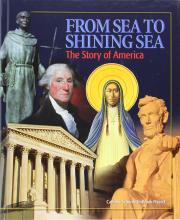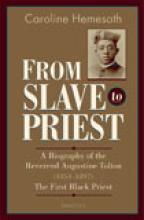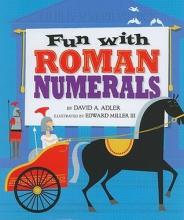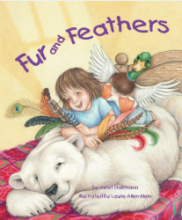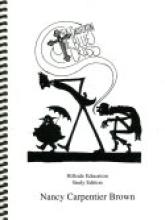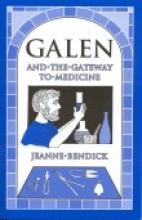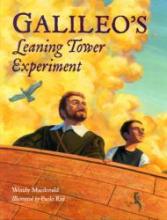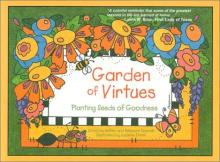No name
From Sea to Shining Sea
We just finished a great history year, my two middle-schoolers and I. We tackled American History and used as our textbook Catholic School Textbook Project's From Sea to Shining Sea. I divide our school year into four quarters, so we had exactly five chapters per quarter. Every Wednesday afternoon we sat down in the sunny, bright living room and I would begin reading a chapter aloud. My two middle-schoolers would then each a take turn reading and we would have the chapter read in just over an hour. They used an atlas to find and trace the historical routes covered that session.
After the usual discussion, during which I would blurt out questions such as “Imagine if they had never made it there…” and when they would wonder about such things as “How could they do that?”, we would move on to the quizzes and tests in the teachers’ manual. We did those orally and I would have them take turns answering the questions. If one could not answer the other could help. At the end of the quarter we would review the material and I would write up a test using the sample test questions for guidance. Although these end-of-quarter exams were several pages long, they had little problem answering the questions, as we had reviewed the material.
We learned much about American History this year thanks to this book. Better yet, they loved it! Each week they looked forward to history. It was our three-way time together. Between the two elementary schooler and two high schoolers at home, the middle-schoolers enjoyed having mom all for themselves on Wednesday afternoons. So they could expand their history study a bit further, each week I used the local library online to select and put on hold materials about about the historical characters we were studying. During our weekly trip to the library we picked up these books and left them out in our library pile in the living room. I would see them reading the books for pleasure before nightly family prayer.
The book offered, we thought, the right amount of information. More would have been too much; less, too little. The chapters were meaty and long, but with one devoted afternoon we did not have trouble reading the whole thing. We stopped the reading occasionally to comment on what was going on, and the “yellow blurbs” as we called them, always offered some food for extra discussions as they provide glimpses of life or special people or events in that time period of American History.
The twenty chapters follow the history of the United States from the Pre-Columbian travels of St. Brendan the Navigator and the Vikings, and continue chronologically until the last chapter entitled “Catholics in America”, which discusses figures such as Dorothy Day and J. F. Kennedy. The paper is glossy, the layout attractive and colorful, and the illustrations are generous and interesting. Each chapter offers Summary, a Chapter Checkpoint, Activities and “The American Larder” with interesting facts about things culinary of that specific time period. The companion volume, still in beta version at the time of the this review, offers more summary paragraphs, answer to the chapters’ questions and sample quizzes and tests to each chapter. I used it consistently throughout the year.
The list of contributors is impressive with such names as Professor James Hitchcock from St. Louis University, the Nashville Dominicans and several Catholic academics. It is indeed a delight to use an attractive, new textbook for History that is not secular or anti-Catholic. The Catholic School Textbook Project should be congratulated in their work to fill a dire need in Catholic education today. The opening paragraphs give a sense of how story-like this textbook is:
'What are the three things God loves, Mother?' the young boy asked. 'Child,' the holy nun replied, 'God loves the true faith that comes from a pure heart. He loves the simple religious life and the generous kindness of Christian love.'
'And what does God hate?' the child then asked.
'Three things He hates,' she replied. 'God hates a scowling face. He hates stubborn wrongdoing, and too much trust in money.'
Thus, St. Ita taught the young boy, Brendan. It was a lesson he learned well. So great was his faith that he took on the religious life of a monk. Though he lived in poverty, Brendan was joyful. He loved neither riches, nor comforts. He lived a life of penance, and what little he had, he generously shared with the poor. When the good Bishop Erc ordained him a priest, Brendan took on a most heroic task: he left his homeland and friends and traveled to foreign lands to spread the Gospel of Jesus Christ.
In addition to the story-like format (my 2nd and 5th graders are really enjoying it as a read-aloud), the text has a number of excellent attributes:
- It ties in interesting and pertinent material that clarifies the historical details (like the 1976 voyage of Tim Severin that helped validate the legends of the voyages of St. Brendan in the 5th century)
- It is beautiful and appealing with full-color illustrations, photographs from historical re-enactments, and plenty of maps.
- It is a complete history course in that it incorporates stories of great Catholic leaders and how their faith influenced them alongside the basics of American history expected of any good American history text.
The book emphasizes the early discoveries of America, the explorers, colonial life and the history of the United States from the American Revolution through the Civil War. It also touches upon Catholic influences in American History in the 19th and 20th centuries.
I'm very, very impressed with this text and look forward to reading the rest. My children (grades 2 and 5) have been enjoying it as a read-aloud as well. I would like to note that there are some aspects of American history that aren't pretty and might be troubling to sensitive children. An example I came across in this text is a brief explanation of the ritualistic human sacrifices performed by the Aztecs. It is essential to understanding that time period in history and is explained in an appropriate fashion, but might require some supervision on the part of parents.
From Slave to Priest
Fun with Roman Numerals
I showed this book and read it aloud to my kids in Junior Classical League's last meeting, and except for one kid, the club's president and a Latin aficionado, none of us knew about the Roman numerals on the two last pages! Have fun learning!
From the publisher:
Page IV, Super Bowl XLV. Built in MMVIII. Roman numerals are everywhere---on clocks, in books, and on buildings. But what do Roman numerals mean, and how does one use them? Fun with Roman Numerals is a straightforward and appealing introduction to a timely topic. On a scale of I to X, it's an XI!
Fur and Feathers
In Sophia's dream, all the animals had their coats blown off and so she has to make new ones for them, adding her own special touches. This is the story of "fur and feathers" which introduces young children to animal classification.
The story has a good variety of common animals with different coats. A few parts are a bit contrived, like the frog finding the slime, but otherwise the story is engaging. The "For Creative Minds" section at the end of the book contains activities based on animal classification.
Most of each two-page spread is dedicated to the lovely artwork of animals in Sophia's bedroom. You can see a preview document or video at http://www.sylvandellpublishing.com/bookpage.php?id=FurFeathers
Fur and Feathers is a wonderful beginning book to introduce children to scientific classification, and even to good observation. Read this before your next trip to the zoo!
G.K. Chesterton's The Blue Cross, Study Edition
With this study guide I don't have to tweak much. Mrs. Brown has given her reader everything they need for a study of the short story "The Blue Cross" - even the story - in this 90-page study guide.
The study guide includes biographical information about Chesterton - a British Catholic convert well-known for his wit and deep, symbolic writings. Mrs. Brown is somewhat of a Chesterton scholar, so her write-up is not only accurate, it's extensive. She includes references to the Catechism of the Catholic Church to ensure the student understands the Church's teachings on reason; teachings that always play a big part in Chesterton's writings.
Mrs. Brown includes a suggested schedule which takes about 10 days to complete - you of course could make the study of this exceptional short story either longer or shorter. There are essay topics and short-answer questions to help the student delve into the meaning of the story. There are vocabulary words, literary terms (for example, alliterations and similes), understanding through contextual reading, and other activities to enliven the reader's experience of this first of the Father Brown stories. An answer key is included at the end of the study guide.
The study guide itself is a useful size - a 6"x 8" spiral bound volume with a great silhouetted graphic on the laminated cover. This study guide just begs to be opened and used -- always a bonus when spending money from usually quite limited homeschool budgets.
Galen and the Gateway to Medicine
Galen was born in 129 A.D. in present day Turkey (at that time part of the Roman Empire). When he studied medicine, medical training was very haphazard, but in his lifetime he revolutionized the idea of what a doctor should be, both by his example as a renowned doctor and his extensive writings on anatomy and pharmacology (some of which are still in existence today). His experience in treating patients from wounded gladiators to the wealthy of Rome to Roman emperors, extensive study of medicinal plants, dissection of animals, etc. led to his remarkable success as a doctor and the respect with which his writings were treated.
The medical aspects of the book largely focus on the quest to understand the purpose of each of the organs and the workings of the circulatory system. The author also provides us with a final chapter which summarizes the medical advancements after Galen that led to our current understanding of how the body works. Like Archimedes and the Door of Science, this story will be best understood by ages ten and up and takes a certain amount of concentration to follow the story and absorb its content well. However, the rewards are great in acquiring a deeper understanding of Roman culture, medicine, and the respect for life that has been passed down from the Hippocratic tradition.
Galileo's Leaning Tower Experiment
Additional review: World Geography, World History, science... and some creative fictional characters as well! All in a beautiful information Picture Book.
The story of the legendary Leaning Tower of Pisa experiment by Galileo is brought to life here around the story of a boy, Massimo, who was very clever, and dropped his father's lunch from a bridge everyday in calculating motions... until a passer-by professor named Galileo witnesses it and rethinks the whole Aristotelian notion on the subject!
The pictures are colorful, warm and very pleasant, and some of the angles are taken from delightful perspectives!
A gem. A very nice way to introduce children to Galileo and to some concepts of Physics.
See our other review of Galileo's Leaning Tower Experiment here.
Galileo's Leaning Tower Experiment
Science readers are to be found if you look around enough as this book demonstrates. It is the fictional story of Massimo, a boy who regularly throws his uncle's lunch off a bridge to his boat as his uncle rows by below. Galileo happens to see that the bread and the cheese land at the same time. The story ends atop the leaning Tower of Pisa, as legend suggests Galileo did.
The illustrations are a little disappointing, the people in particular. The story is sometimes forced as math and science readers often are; however, overall it is a great tale that teaches a basic principle of physics sure to have your children dropping objects from heights. It even alludes to Galileo's ramp experiments on acceleration. The last page briefly fills in the reader on the period in history, what in the story is fact and fiction, and the formula for calculating speed.
Overall this is a great introductory physics science book.
Garden of Virtues
This is a friendly and lovely little book on practicing the virtues in the midst of family life. Although it is clear that at least one of the authors is Catholic, the book is written on a very practical level and in such a way that it would be appealing to any family attempting to live a peaceful and virtuous life (particularly in the midst of raising children).
The book is intended to be used by the family as a whole, perhaps sharing a new chapter at the dinner table each week. Each chapter (three to four pages long) covers one virtue. A simple definition of the virtue is given, along with ideas for fostering the virtue, avoiding its opposite and a good, related family rule to apply. The chapters include simple ideas and stories which illustrate the importance of the virtue and its true meaning. There are fifty-two virtues in all - one for each week of the year. Virtues covered range from Audacity (they even quote St. Thomas Aquinas in defense of considering audacity a virtue - very impressive!) to Wisdom and other important virtues (listed alphabetically) in between.
The book is very charming, with full-color garden-themed illustrations on every page (in a style reminiscent of Mary Engelbreit). This is a nice supplement to the more theology-oriented studies of virtue to remind children (and their parents) about the basics of living a moral life.

